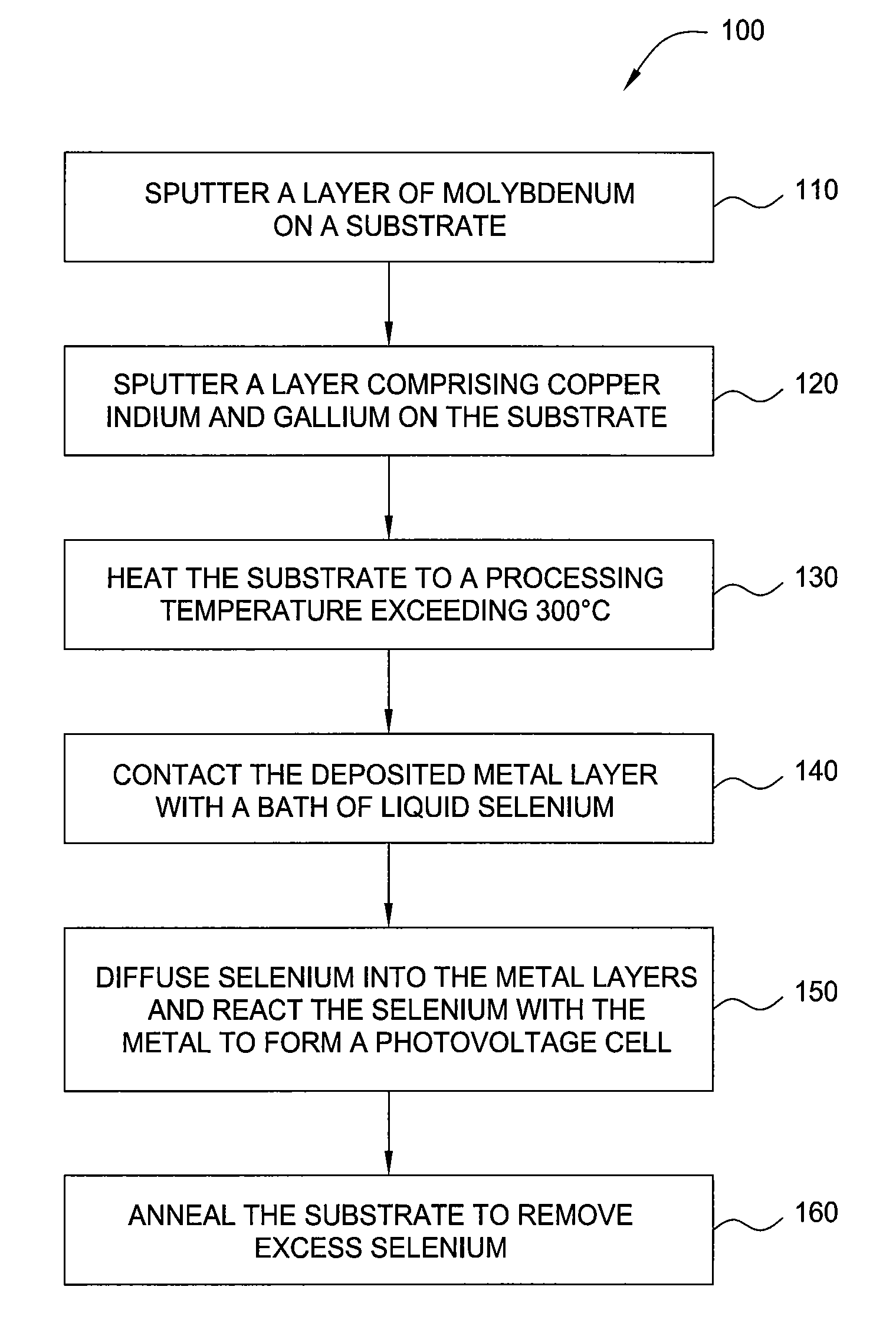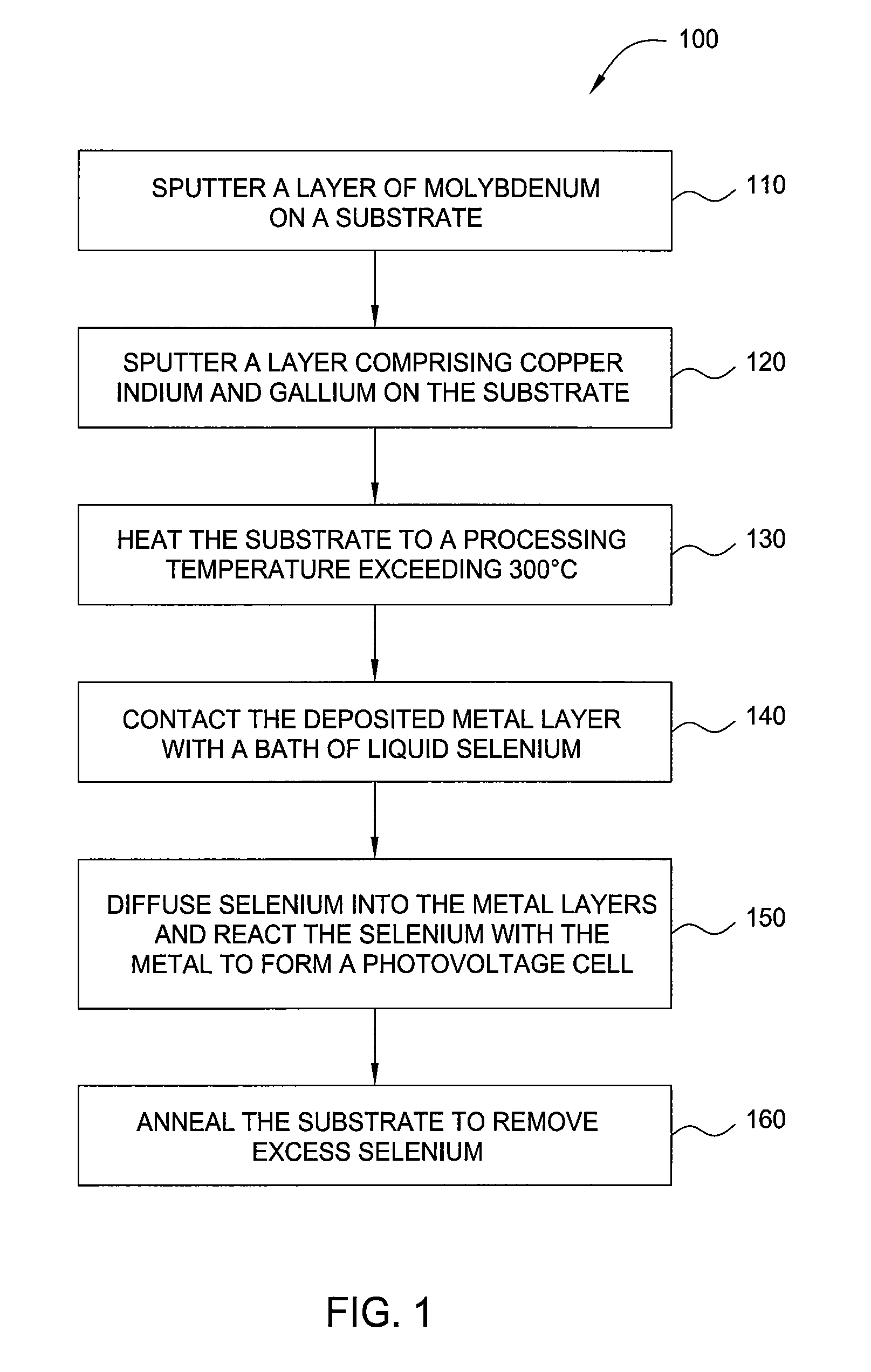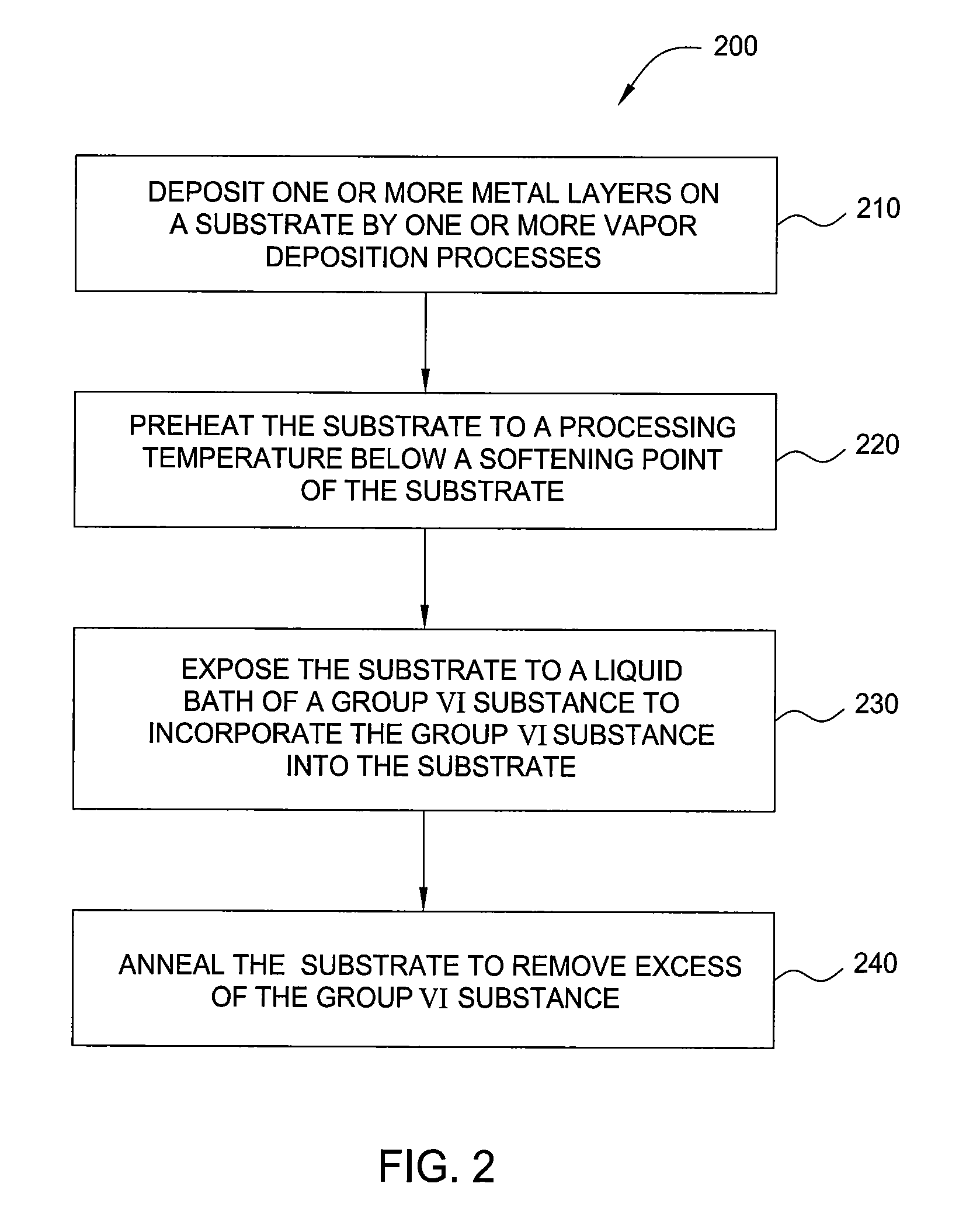Sulfurization or selenization in molten (liquid) state for the photovoltaic applications
a photovoltaic and liquid state technology, applied in the field of compound semiconductor material formation, can solve the problems of hazardous sulfurization and selenization processes, affecting the quality of photovoltaic cells,
- Summary
- Abstract
- Description
- Claims
- Application Information
AI Technical Summary
Benefits of technology
Problems solved by technology
Method used
Image
Examples
Embodiment Construction
[0017]Embodiments of the invention generally provide a method of incorporating a chemical component into a solar cell substrate. Methods described herein are generally useful for fabricating so-called II / VI compound semiconductors, which have uses in solar panel and integrated circuit applications. Compounds in this group generally comprise components selected from the group consisting of copper, indium, gallium, molybdenum, thallium, zinc, mercury, boron, aluminum, silver, sulfur, selenium, and tellurium. In solar and I / C applications, these compounds are generally formed on a substrate as thin films having near-stoichiometric quantities of the “group II” components (Cu, In, Ga, TI, Zn, Hg, B, Al, Ag) with one or more of the “group VI” components (S, Se, Te). While metals in the zinc column of the periodic table are frequently used alone as the group II component (e.g. CdS, CdSe), elements on one side of the zinc column are frequently combined with elements on the other side to pro...
PUM
| Property | Measurement | Unit |
|---|---|---|
| temperature | aaaaa | aaaaa |
| thick | aaaaa | aaaaa |
| thick | aaaaa | aaaaa |
Abstract
Description
Claims
Application Information
 Login to View More
Login to View More - R&D
- Intellectual Property
- Life Sciences
- Materials
- Tech Scout
- Unparalleled Data Quality
- Higher Quality Content
- 60% Fewer Hallucinations
Browse by: Latest US Patents, China's latest patents, Technical Efficacy Thesaurus, Application Domain, Technology Topic, Popular Technical Reports.
© 2025 PatSnap. All rights reserved.Legal|Privacy policy|Modern Slavery Act Transparency Statement|Sitemap|About US| Contact US: help@patsnap.com



